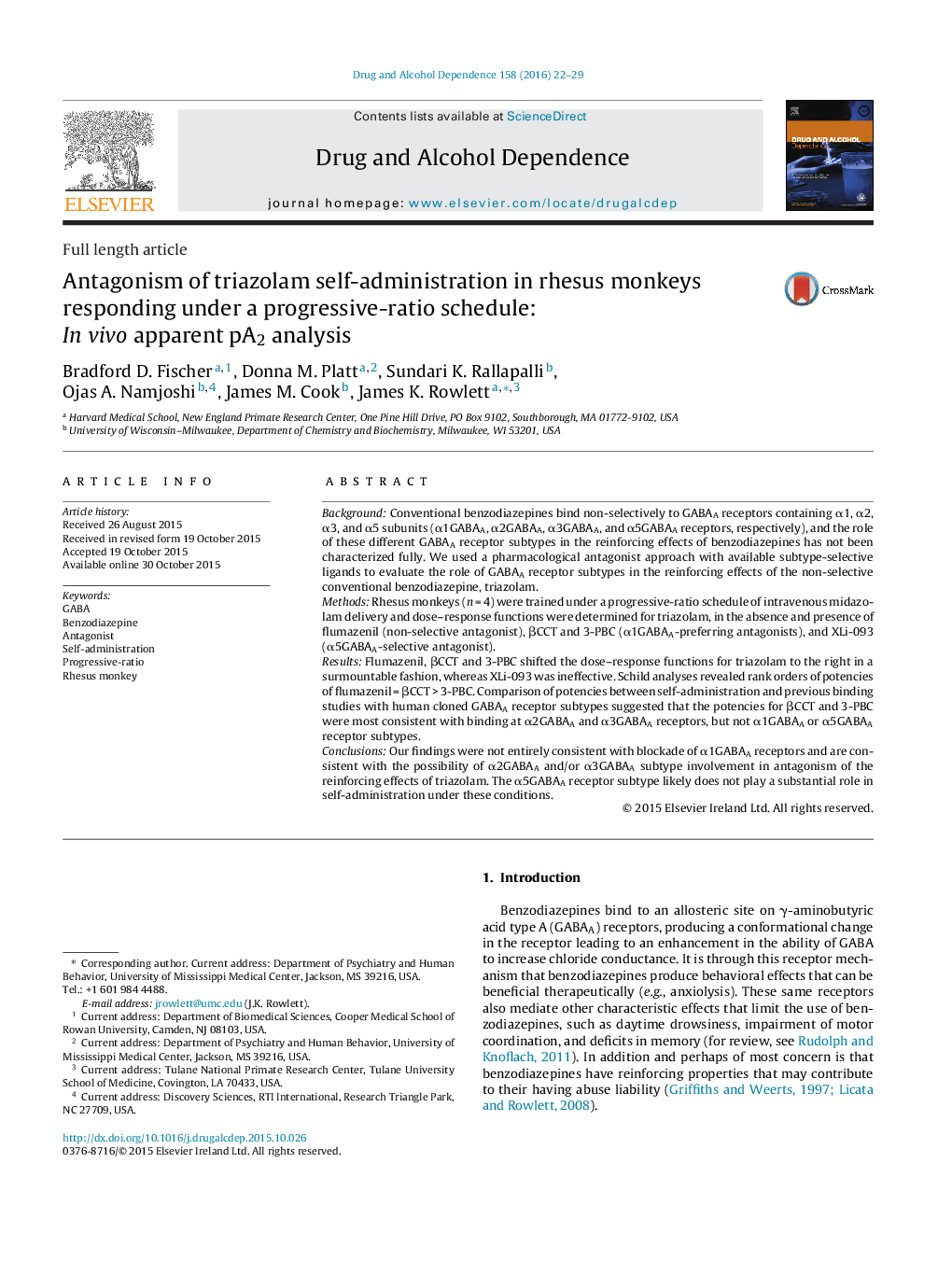| کد مقاله | کد نشریه | سال انتشار | مقاله انگلیسی | نسخه تمام متن |
|---|---|---|---|---|
| 1069735 | 1486133 | 2016 | 8 صفحه PDF | دانلود رایگان |

• We evaluated antagonism of the reinforcing effects of the benzodiazepine triazolam.
• Non-selective and α1GABAA-selective ligands antagonized triazolam's effects.
• A highly-selective α5GABAA antagonist did not block triazolam's effects.
• Consideration of potency relationships suggested a role for α2/3GABAA receptors.
BackgroundConventional benzodiazepines bind non-selectively to GABAA receptors containing α1, α2, α3, and α5 subunits (α1GABAA, α2GABAA, α3GABAA, and α5GABAA receptors, respectively), and the role of these different GABAA receptor subtypes in the reinforcing effects of benzodiazepines has not been characterized fully. We used a pharmacological antagonist approach with available subtype-selective ligands to evaluate the role of GABAA receptor subtypes in the reinforcing effects of the non-selective conventional benzodiazepine, triazolam.MethodsRhesus monkeys (n = 4) were trained under a progressive-ratio schedule of intravenous midazolam delivery and dose–response functions were determined for triazolam, in the absence and presence of flumazenil (non-selective antagonist), βCCT and 3-PBC (α1GABAA-preferring antagonists), and XLi-093 (α5GABAA-selective antagonist).ResultsFlumazenil, βCCT and 3-PBC shifted the dose–response functions for triazolam to the right in a surmountable fashion, whereas XLi-093 was ineffective. Schild analyses revealed rank orders of potencies of flumazenil = βCCT > 3-PBC. Comparison of potencies between self-administration and previous binding studies with human cloned GABAA receptor subtypes suggested that the potencies for βCCT and 3-PBC were most consistent with binding at α2GABAA and α3GABAA receptors, but not α1GABAA or α5GABAA receptor subtypes.ConclusionsOur findings were not entirely consistent with blockade of α1GABAA receptors and are consistent with the possibility of α2GABAA and/or α3GABAA subtype involvement in antagonism of the reinforcing effects of triazolam. The α5GABAA receptor subtype likely does not play a substantial role in self-administration under these conditions.
Journal: Drug and Alcohol Dependence - Volume 158, 1 January 2016, Pages 22–29